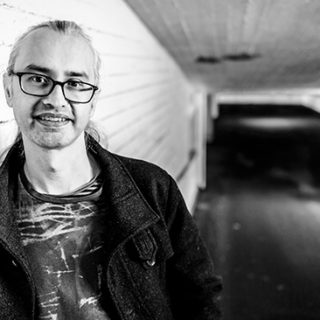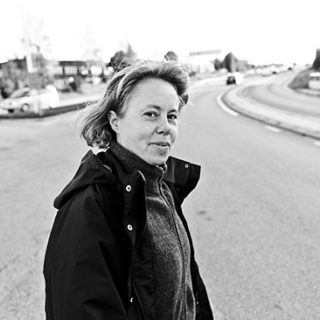Cooperation is key to better integration of asylum-seeking children
How can we improve the chances of integration for young people who are illiterate? This question has become topical with the major rise in the number of children seeking asylum in Sweden. According to researchers, innovative approaches in the public sector are now needed to deal with the challenges. A project with participants from Lund University and the City of Helsingborg highlights several potential areas for development.
‟Researchers agree that language is key to integration and education represents a great opportunity to enter society”, says Ulrika Westrup.
She is a senior lecturer at the Department of Service Management and Service Studies at Campus Helsingborg. Together with Annika Nilsson, a project manager at the Research and Development unit for social sustainability at the City of Helsingborg, she has been working since last year on a project which aims to create the conditions for young asylum seekers in Sweden to have an independent life.
‟A situation arose in which a large number of refugees arrived in Sweden within a short time. We observed that many of the young people had only a brief education or none at all”, says Annika Nilsson.
The project focuses on 20 pupils aged 16 to 17 who are all in one class at a local school, Nicolaiskolan.
‟Most of them are from Afghanistan, but there are also a few from Syria, Iraq and Morocco. These are youths who are a long way from meeting educational targets”, explains Annika Nilsson.
A few of the youths may have some form of brief education, but they cannot read or write in their native language. Several of them have work experience, as carpenters or mechanics, for example.
‟They have managed well in their home countries without knowing how to read and write”, says Annika Nilsson. ‟Now they are in a new context with different expectations.”
“The best outcome is when we can help the youths to develop their own study strategies.”
In school, the 20 youths are primarily to learn Swedish, mathematics and English and will be given tuition in sports and crafts. The teaching is done in various stages – first to acquire skills and knowledge equivalent to third grade, then 6th grade and finally 9th grade. The aim is for the young pupils to be qualified for admission to upper secondary school by the age of 20.
‟This is a major challenge. Many of the youths who are new to Sweden find it difficult to learn Swedish and to complete a primary and lower secondary school education by the time they turn 20. It is even more difficult for the youths who cannot read and write even in their own language. This is why the municipality needs to get better at providing these youths with the right support”, says Ulrika Westrup.
‟We try to look at this from the perspective of these young people. It’s not really their concern that there are lots of different public administrations involved – so the administrations must get better at coordinating amongst themselves”, she continues.
During the autumn, the researchers held six different meetings with the youths.
‟First, they got to describe their situation and what they consider to be important. The meetings were very rewarding. We tried to understand what they see as important conditions”, says Ulrika Westrup.
‟These young people don’t yet know whether they will be allowed to stay in Sweden. Waiting for notification about a residence permit is stressful for them and they are living with a great deal of uncertainty. This can affect their ability to learn in school.”
‟We also had meetings with teachers, housing coaches, social workers and officials. They explained that they are all working on helping the young people to learn Swedish. The best outcome is when we can help the youths to develop their own study strategies”, says Ulrika Westrup.
She and Annika Nilsson agree on the importance of allowing the youths to develop their agency and not only to be seen as in need of help.
“What is important is to take the young people and their needs as the starting point for our work. It sounds obvious, but it can be hard to apply when working in a large organisation which is divided into different administrations. We usually describe them as organisational silos”, explains Ulrika Westrup.
“We have identified a few areas the administrations must continue to work on. They generally concern how we can collaborate better and use our resources more efficiently”, says Annika Nilsson.
Some of the key areas are:
Cooperation between administrations.
“Communication needs to improve and we need more shared knowledge on individual youths”, says Ulrika Westrup.
Documentation – there is a lot of bureaucracy and some of the material is not used. Confidentiality is also a problem.
“Knowledge about confidentiality is often poor. There could be more training about the rules. As it is now, there is too much misunderstanding and information cannot be shared between administrations, for example between teachers and social workers. It would help if the youths were in charge of their own documentation”, Annika Nilsson points out.
Resources which are available but not used optimally.
“These can be resources in the form of a school counsellor or school nurse, for example. These youths are not used to going to a counsellor, since they have not been to school”, says Ulrika Westrup.
Objectives that are unclear.
“The administrations are not used to setting goals which involve several different authorities”, observes Ulrika Westrup. And the goals they have are often general. We may need to set more specific goals that enable us to help these young people better.”
Now the researchers are finalising a report, which summarises the pilot project and presents proposals for how to proceed.
Text: Lars Ljunggren
Other researchers who are part of the project are Katja Lindqvist and Malin Espersson from Lund University and Pernilla Danielsson from the City of Helsingborg.
Facts
-
No. of asylum-seekers
-
From 2000 to 2016, a total of 65 649 unaccompanied minors sought asylum in Sweden. Over the past two years (2015 and 2016) the largest groups were citizens of Afghanistan (24 145), Syria (3 957), Somalia (2 479), Eritrea (2 013) and Iraq (1 190). Source: Swedish Migration Agency









